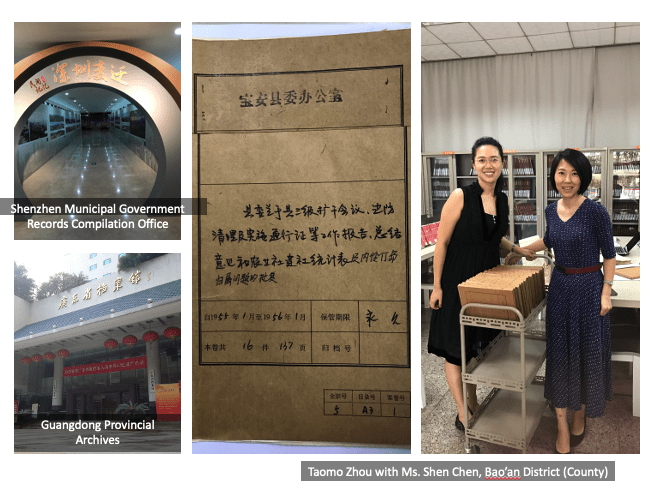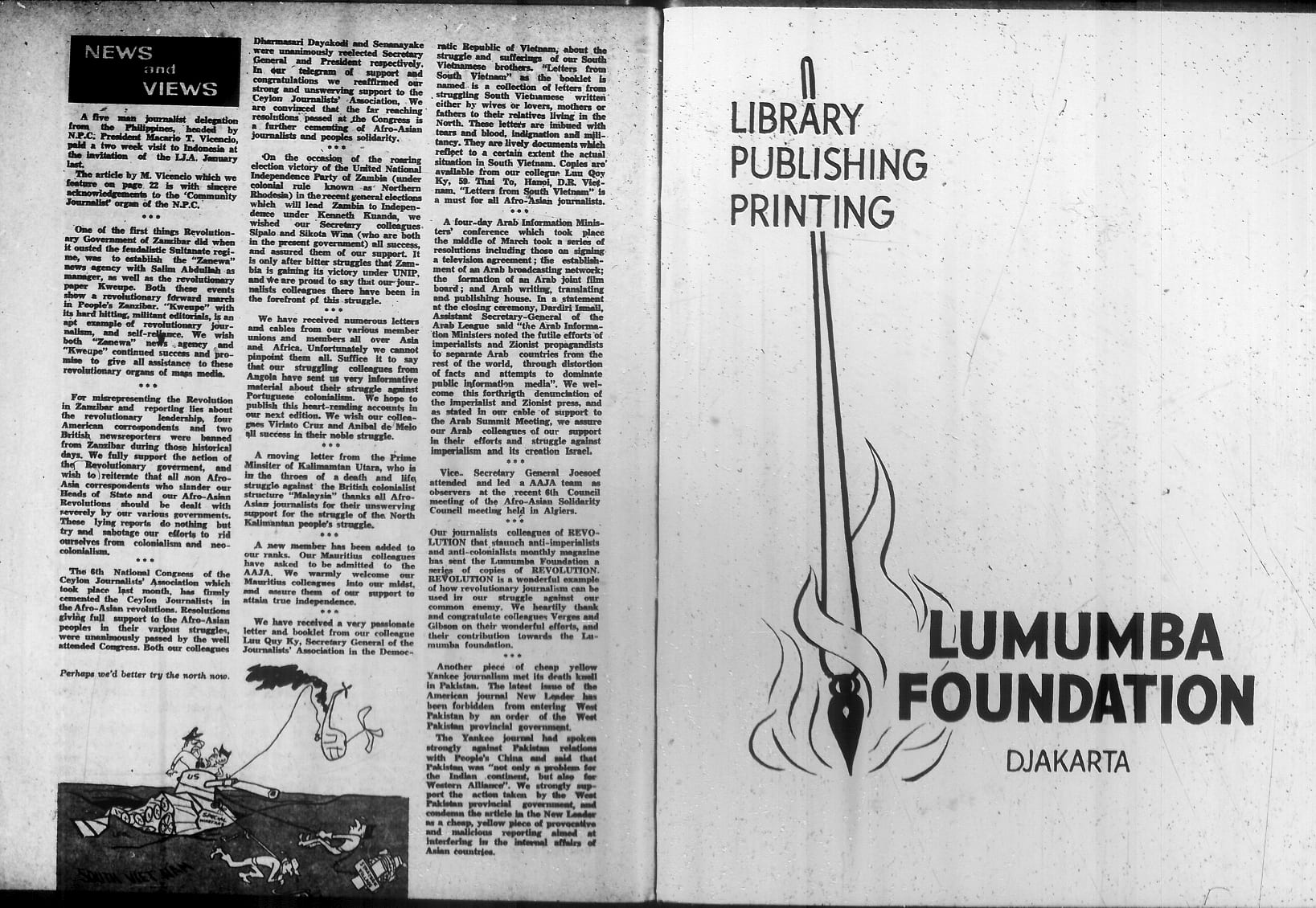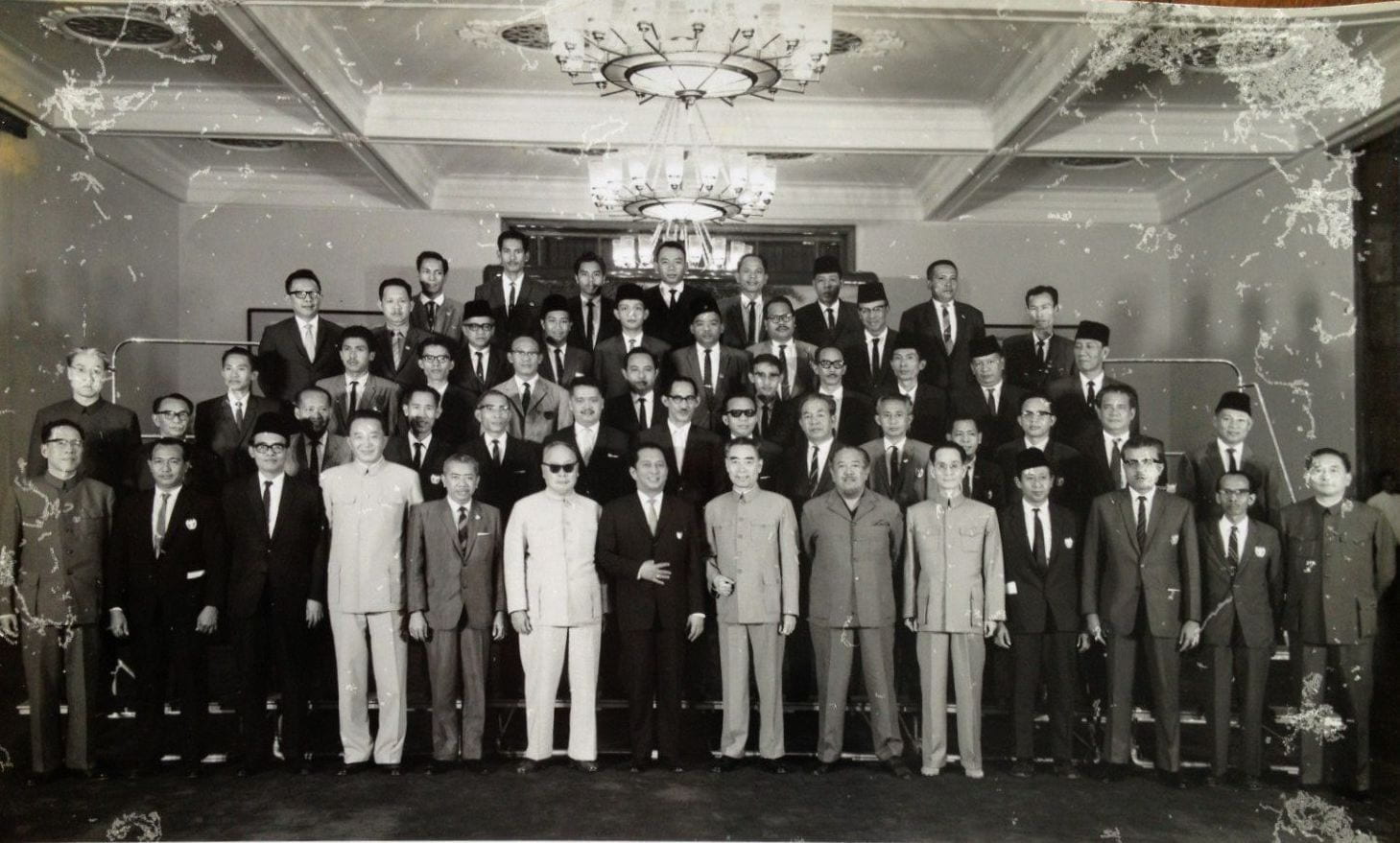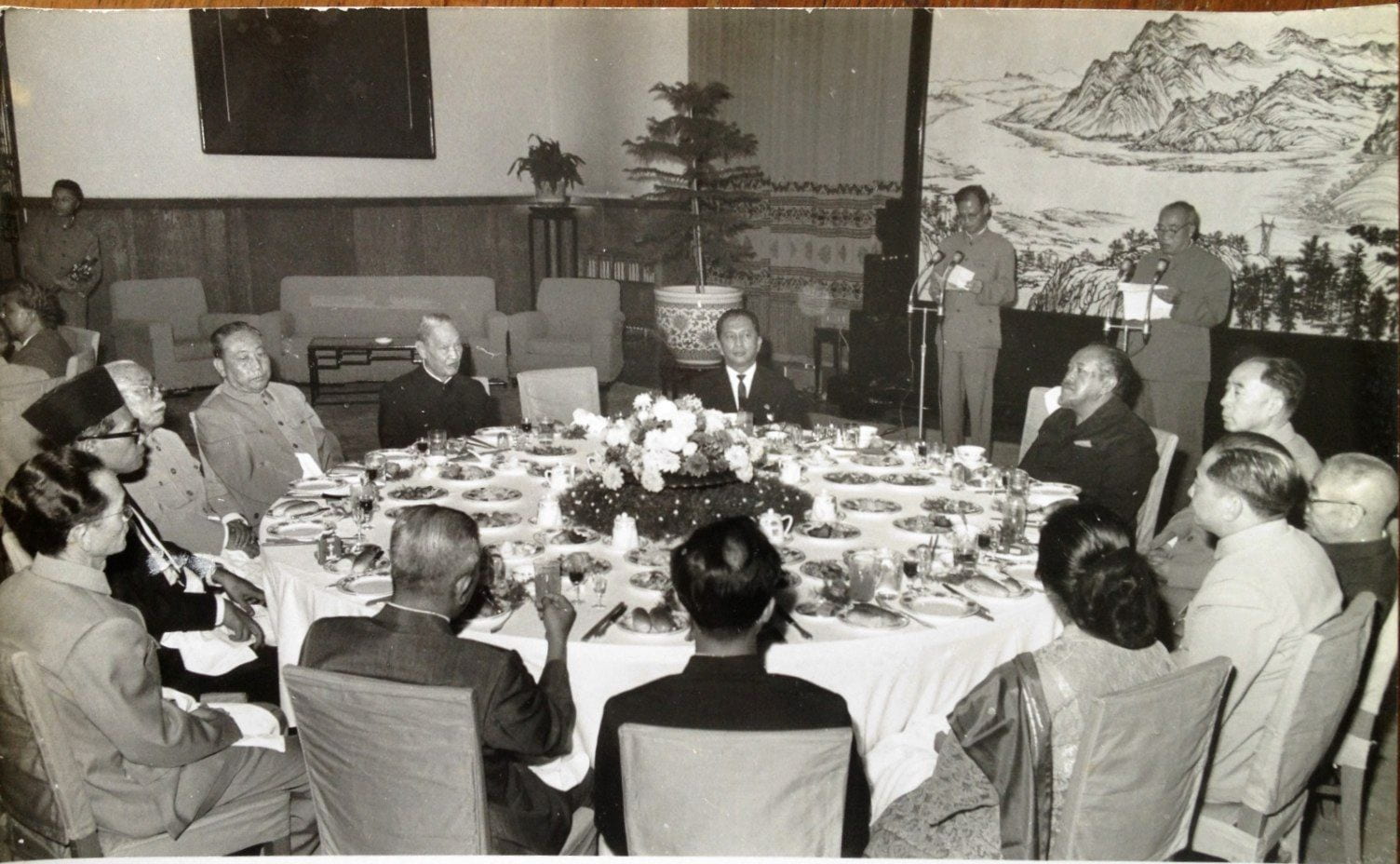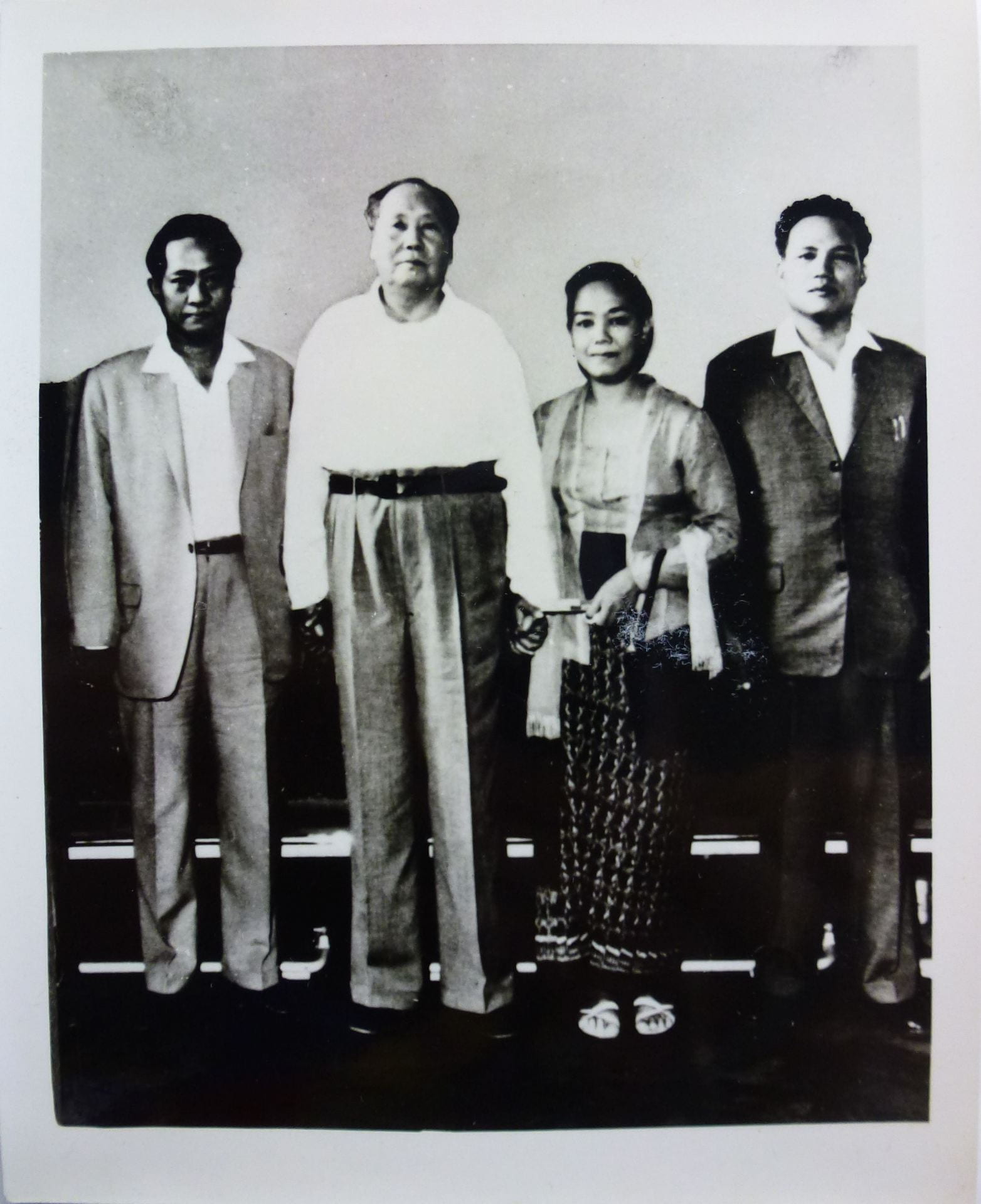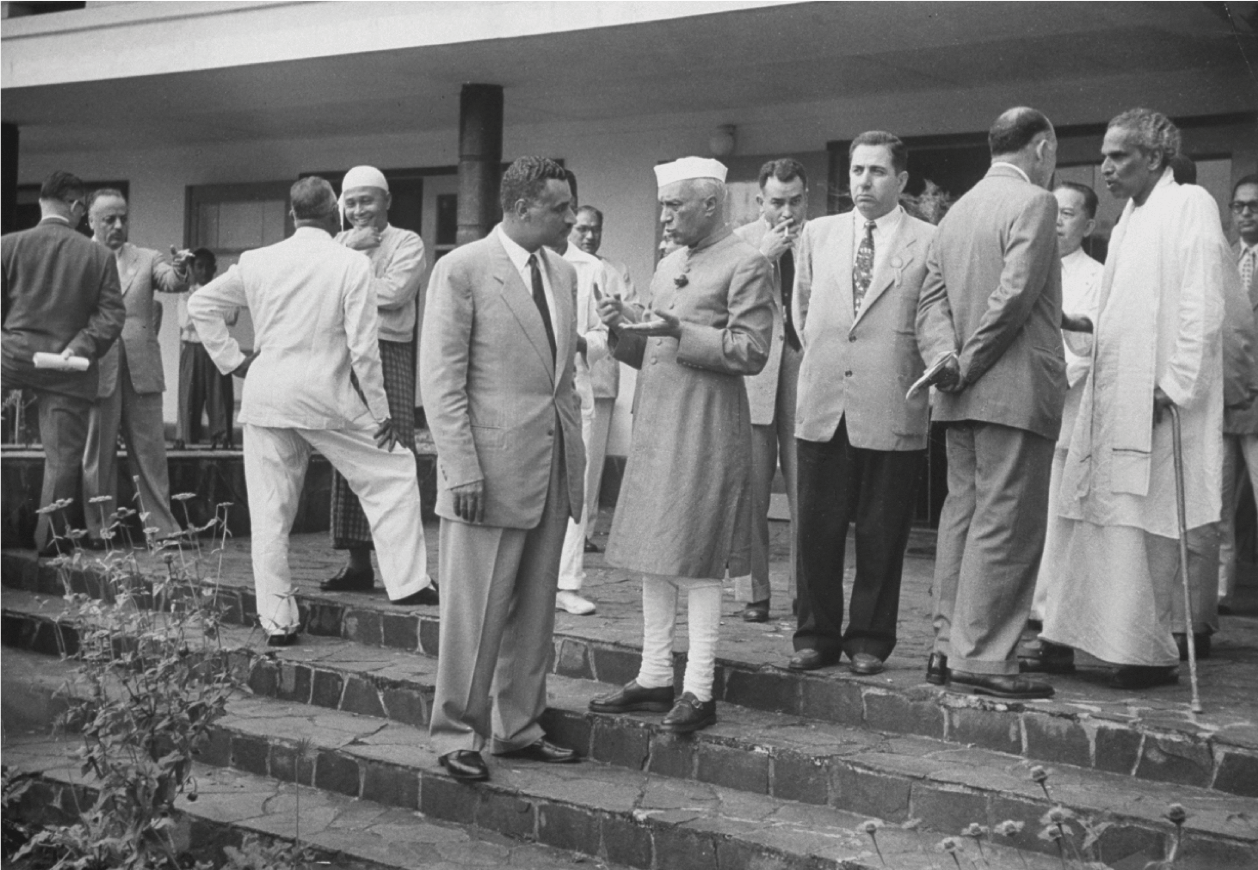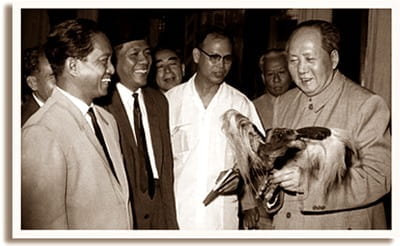ARTICLES AND BOOK CHAPTERS
“Leveraging Liminality: The Border Town of Bao’an (Shenzhen) and the Origins of China’s Reform and Opening,” Journal of Asian Studies 80 (2): 337-361 (May 2021). http://dx.doi.org/10.1017/S0021911821000012.
“Revolution Offshore, Capitalism Onshore: Ships and the Changing Relationship between China and the World,” Made in China Journal 6 (2 ): 104-119 (May-August 2021), https://madeinchinajournal.com/2021/08/12/revolution-offshore-capitalism-onshore/
Taomo Zhou and Joseph Scalice, “Reinvented Revolutionaries: Indonesian and Filipino Communist Exiles in China,” Diplomatic History, Vol 45, No. 3 (2021): 643-655.
“From the Third Front to the Second Line: The Construction Soldiers of Shenzhen,” Made in China Journal 5: 3 (2021): 108-113.
“Sukarno’s Nuclear Ambitions and China: Translated and Annotated Documents from the Chinese Foreign Ministry Archives,” Indonesia 108 (October 2019), 89-120
“Global Reporting from the Third World: The Afro-Asian Journalists’ Association, 1963-1974,” Critical Asian Studies, 51:2, 166-197 (Jan 2019).
Taomo Zhou and Hong Liu, “Chinese Foreign Policy: Southeast Asia,” in Weiping Wu and Mark W. Frazier eds., The SAGE Handbook of Contemporary China (Thousand Oaks, CA: SAGE Publications, 2018), 610-629.
“Ambivalent Alliance: Chinese Policy towards Indonesia, 1960-1965,” The China Quarterly 221 (March 2015), pp. 208-228.
“China and the Thirtieth of September Movement,” Indonesia 98 (October 2014), pp. 29-58.
Translation in Bahasa Indonesia: “Tiongkok dan G30S,” in Kurasawa Aiko and Toshio Matsumura eds., G30S dan Asia—Dalam Bayang-bayang Perang Dingin (Jakarta: Kompas, 2016), 1-60.
Hong Liu and Taomo Zhou, “Bandung Humanism and A New Understanding of the Global South: An Introduction,” Critical Asian Studies, 51:2, 141-143 (Jan 2019).
“Huaqiao wenti de zhengzhi xuanwo: jiexi 1959-1962 nian Zhongguo dui Yindunixiya zhengce [The turbulences caused by the overseas Chinese issue: An analysis of Chinese policy towards Indonesia, 1959-1962],” Lengzhan guojishi yanjiu [Cold War International Studies] 9 (Summer 2010), pp. 155-174.
“Revolution Offshore, Capitalism Onshore: Ships and the Changing Relationship between China and the World,” Made in China Journal 6 (2): 104-119 (May-August 2021)
[PDF]
Abstract: This essay tells a backstory of the Belt and Road Initiative by tracing the voyages of the Minghua and two other ships managed by the China Ocean Shipping Bureau—both as mobile vessels at sea and as a permanent presence on land. When mobile at sea in the Mao period, these ships functioned as vessels not only for passengers and commodities, but also for Maoist ideology. The Minghua’s retirement to Shenzhen then coincided with China’s transition from the Mao to the Deng era. Having bid farewell to the sea, the ship became part of the city’s landscape and was turned into a dynamic experiment field for the market economy and a medium through which ideas travel and identities shift.
Taomo Zhou and Joseph Scalice, “Reinvented Revolutionaries: Indonesian and Filipino Communist Exiles in China,” Diplomatic History, Vol 45, No. 3 (2021): 643-655.
[PDF]
Abstract: The pandemic involves the loss of the familiar and the compulsion to adapt ourselves to an alien set of circumstances. These are same the challenges faced by certain Indonesian and Filipino sojourners abruptly exiled in Cold War China. Like earlier exiles we are in the process of reinventing ourselves.

“From the Third Front to the Second Line: The Construction Soldiers of Shenzhen,” Made in China Journal 5: 3 2021: 108-113.
[PDF]
Abstract: The PLA engineering corps was established in 1966 for the purpose of industrializing inland regions in order to protect socialist China from American and Soviet threats. Between 1979 and 1982, 20,000 members from the PLA engineering corps arrived in Shenzhen. They took charge of the city’s infrastructure building and participated in the construction of landmarks that represented Shenzhen’s miraculous growth, including the 20-story Shenzhen Electronics Building and the 53-story International Trade Centre. This paper explores the invisible but almost insurmountable boundaries between the third front and the second line that were both crossed and constructed by the engineering corps.
“Leveraging Liminality: The Border Town of Bao’an and the Origins of China’s Reform and Opening,” Journal of Asian Studies (published online March 19, 2021).
[PDF]
Abstract: Located immediately north of Hong Kong, Shenzhen is China’s most successful special economic zone (SEZ). Commonly known as the “social laboratory” of reform and opening, Shenzhen was the foremost frontier for the People’s Republic of China’s adoption of market principles and entrance into the world economy in the late 1970s. This article looks at prototypes of the SEZ in Bao’an County, the precursor to Shenzhen during the Mao era (1949–76). Between 1949 and 1978, Bao’an was a liminal space where state endeavors to establish a socialist economy were challenged by capitalist influences from the adjacent British Crown colony of Hong Kong. To create an enclave of exception to socialism, Communist cadres in Bao’an promoted individualized, duty-free cross-border trade and informal foreign investment schemes as early as 1961. Although beholden to the inward-looking planned economy and stymied by radical leftist campaigns, these local improvisations formed the foundation for the SEZ—the hallmark of Deng Xiaoping’s economic statecraft.
Sukarno’s Nuclear Ambitions and China
[PDF]
Abstract: Inspired by China’s 1964 demonstration of its nuclear capability, Indonesian President Sukarno attempted to direct Indonesia’s nuclear program toward military use. Sukarno’s openly expressed nuclear ambition shocked foreign leaders and officials and created a longstanding mystery about whether China (PRC) exported its nuclear technologies at that time. Through unpacking three sets of contemporaneous Chinese archival materials, this article unveils the details of Indonesian research and military personnel visits to PRC nuclear sites and the nature of bilateral political and academic discussions on nuclear weapons. It argues that, while there was no movement of nuclear fuel or hardware between the two countries, Sino-Indonesian exchanges reveal the fluidity of individual political players’ ideologies (including those of left-leaning politicians, anticommunists, and neutralists), the complexity of bilateral relations, and the paradoxical quality of Third World solidarity in the atomic age. Many of the military and technical experts who approached Beijing for nuclear aid peacefully transitioned into the Suharto era and achieved personal success, quite unlike the experiences of “pro-China” Indonesian politicians who weren’t favorably associated with the nuclear program. Ideological fissures persisted between the two countries even when they shared substantial mutual interests in the short term. But those schisms sometimes appeared to be invisible to the United States and Soviet Union, which at the time were anxious to rein in potential nuclear proliferators in the Third World, and particularly in the Asia-Pacific region against the backdrop of the ongoing conflict in Vietnam.
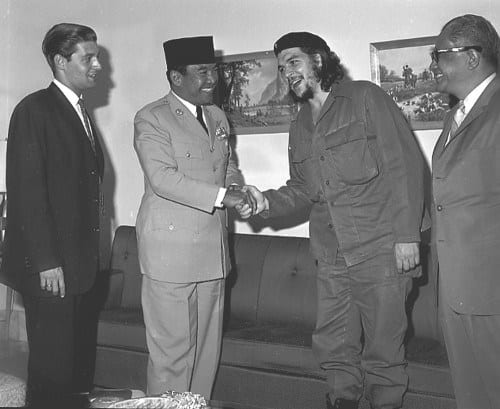
GLOBAL REPORTING FROM THE THIRD WORLD
[PDF]
Abstract: Originating from the 1955 Bandung Conference, the Afro-Asian Journalists’ Association (AAJA) promoted international collaboration among journalists in newly independent countries. Built on an inclusive foundation of peaceful co-existence, the AAJA contributed to the development of expansive global information networks, lively intellectual traffic, and rich visual arts among Afro-Asian nations. However, the cosmopolitanism of its early years was later undermined by the decline of constitutional democracy in Indonesia and a lack of cohesion among Afro-Asian nations. After the September Thirtieth Movement in Indonesia in 1965, the AAJA relocated to Beijing and was mobilized by the People’s Republic to promote its self-image as the leader of an embittered Third World’s battle against American imperialism and Soviet revisionism. In the early 1970s, ideological fervor began abating in China. During this time, Mao’s reframing of the three worlds, which was based on developmental measurements, redirected the AAJA’s Third World discourse to issues of modernization until its quiet dissolution in 1974. The ideological shifts by the AAJA demonstrate the complex and often conflicted ways in which two important post-colonial states —Indonesia and China—conceptualized “the Third World” and formulated media representations during the Cold War.
CHINESE FOREIGN POLICY: SOUTHEAST ASIA
[PDF]
Abstract: This chapter examines the changing contours of China-Southeast Asia relations from the founding of the People’s Republic of China (PRC) in 1949 to the present. It consists of two parts: The first part presents a chronological historical overview of the relationship between China and Southeast Asia. During the Mao era (1949-1976), ideology had been the main driving force behind Chinese policy towards Southeast Asia. Since the launch of the “reform and opening-up” program by a new leadership under Deng Xiaoping at the end of 1978, Sino-Southeast Asian relations have been mainly shaped by the economic interests and realpolitik calculations of different stakeholders, including the Chinese and Southeast Asian governments as well as major external powers such as the United States and Japan. The second part of this chapter discusses three major factors affecting this relationship: ethnic Chinese in Southeast Asia, South China Sea disputes, and increasingly complex trade and investment networks. The conclusion identifies a few currently debated issues and some future challenges, including the PRC’s “One Belt One Road” initiative and its efforts to project soft power.
AMBIVALENT ALLIANCE: CHINESE POLICY TOWARDS INDONESIA, 1960-1965
[PDF]
Abstract: From 1960 until 1965, the People’s Republic of China (PRC) built a remarkably cordial quasi alliance with the Republic of Indonesia. At the same time, however, the years between 1960 and 1965 were marked by two large waves of anti-Chinese movements in Indonesia. Although more than half a century has passed since these events, our understanding of Chinese foreign policy towards Indonesia during these turbulent years remains incomplete. In 2008, the Chinese Foreign Ministry Archives declassified for the first time documents produced during the years between 1961 and 1965. However, very recently in summer 2013, the Chinese Foreign Ministry Archives re-classified the main body of its collection. Through examining this body of fresh but currently inaccessible official records, this article aims to bridge the gap between scholarly works on the PRC’s diplomatic history and overseas Chinese history. By tracing the processes by which Chinese diplomats dealt with Sukarno, the ethnic Chinese in Indonesia, and the Communist Party of Indonesia (Partai Komunis Indonesia, or the PKI), this article argues that the ambivalent Chinese alliance with Indonesia was shaped by three disparate pressures which interacted and competed with one another: the strategic need to befriend Third World countries, ethnic ties to the Chinese in Indonesia and ideological commitment to the international communist movement.
CHINA AND THE THIRTIETH OF SEPTEMBER MOVEMENT [PDF]
TIONGKOK DAN G30S [PDF]
Abstract: There has been a lot of uncertainty around the role of the People’s Republic of China (PRC) in Indonesian politics immediately before and during the Thirtieth of September Movement (Gerakan 30 September). The Suharto regime made repeated, although unverified, accusations that Communist China was involved in the September Thirtieth Movement. Based on documents from the Chinese Foreign Ministry Archives and Chinese Communist Party Central Archives, this article demonstrates that, from late 1964 to September 1965, Beijing used much of its political leverage to push for a scenario that suited its best interests in Indonesia—an adamant leftist government led by Sukarno and the PKI jointly, with the right wing undermined or eliminated. But Beijing’s actual influence over the PKI and the turn of events in Indonesia in 1965 was limited. In his meeting with Mao Zedong on August 5, 1965, Aidit sketched out what he would do in a political scenario without Sukarno. The Mao-Aidit conversation is probably the best evidence we have obtained so far to indicate that Aidit was a conscious actor in the movement while Beijing’s influence was marginal. Beijing supported the proposal of the Fifth Force in order to help the pro-Sukarno forces (the PKI and the Indonesian Air Force) strengthen themselves against the right-wing elements in the Indonesian Army. However, all the arms deals were made on a government-to-government level rather than through inter–Communist Party channels and none of the light weapons offered by Beijing arrived in Indonesia prior to the September Thirtieth Movement.
BANDUNG HUMANISM AND A NEW UNDERSTANDING OF THE GLOBAL SOUTH
[PDF]
Introduction to a roundtable at the Critical Asian Studies, consisting of papers presented at an international workshop at the NTU.
[摘要] :
本文集中分析从1959年印尼歧视华商条例颁布到1962年印尼成功收回西伊里安主权这段时间,中国对印尼政策的形成背景与发展。这一时期,西伊里安问题和华侨问题是相互缠绕的两条线索。本文认为,东西方两大阵营围绕西伊里安问题在印尼展开复杂激烈的权力斗争,以及由此引发的印尼国内政治的动荡,是排华浪潮爆发与后来平息的根本原因。从争端的产生与矛盾的升级,到冲突的化解与两国关系的缓和,中国一直以防守的姿态等待印尼国内情势和外交政策向有利于自身的方向转变。中美对峙的基本格局,使得中国认定印尼排华问题的本质是帝国主义挑拨中国与亚非国家关系的阴谋,从而对印尼采取了以妥协争取缓和的基本政策,试图通过团结印尼粉碎美国离间两国的企图。中苏分歧的日益深化,又使得中国一方面乐于看到苏联在印尼的干涉对美国形成制衡,一方面又隐隐预感到中苏可能会围绕印展开竞争。同时,在国际共产主义运动中,印尼共产党抛弃武装斗争哲学并未妨碍中共接近印尼共,并争取建立一种基于共同反对苏共霸权姿态的联盟。在对华侨问题以及中共与印尼共的党际关系处理上,中国外交有着与其高亢的舆论宣传相悖的务实的行为特点。


